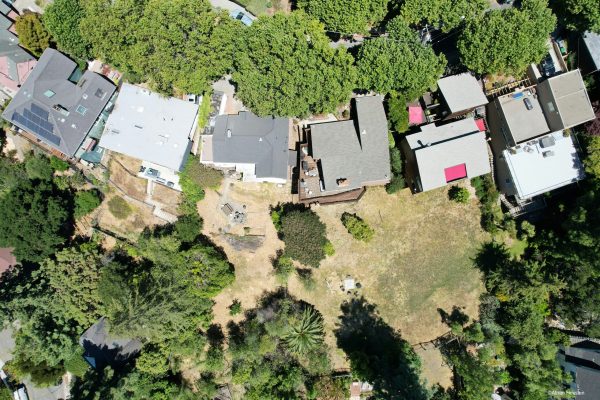Why for-profit housing succeeds
when subsidized housing fails
By Thomas Irwin | March 21, 2024
So what lessons can we draw from what Los Angeles has seen with Executive Directive 1, the city’s effort to streamline regulations for affordable-housing projects?
First, people passionate about making housing more affordable in their cities and neighborhoods should see the market as their friend, not their enemy. Research has long shown that adding new market-rate housing can drive down market rents in all neighborhoods, including low-income neighborhoods. But the evidence from ED 1 goes a step further. New housing can improve affordability by freeing up existing housing – and expand the overall housing stock without government subsidy.
This calls into question the conventional wisdom among California policymakers that market-rate and affordable housing are two different market segments and that new affordable housing needs subsidies to be viable. This is seen in California’s Regional Housing Needs Assessments (RHNA) process. RHNA sets targets for cities to produce housing at all levels of the housing market and asks cities to adopt new land-use rules to facilitate the production of those homes.
However, cities frequently complain that they will fail to produce affordable housing unless the state provides additional billions in funding. ED 1, however, shows that this is false. Whatever the merits of new public financing, cities could spur far more housing at all income levels if they reform their land-use rules and allow the market to work.
The second lesson for housing advocates is that incremental reforms are not in vain. There has been much consternation that the most ambitious and transformative reforms to land-use regulation have failed. This has led some commentators, like Christian Britschgi recently at Reason magazine, to label housing reform in California as a failure, especially as some of the most celebrated reforms have failed to produce new units.
Housing advocacy has failed to achieve all of its promises, but ED 1 shows how a series of incremental reforms can work together to unleash dramatic positive change when a certain tipping point is reached. Housing advocates should balance the desire to see change come quickly and boldly with the reality that, often, incremental change is the only pathway available. They can rest assured that the housing markets can dramatically improve from gradual changes.


The third lesson is policymakers cannot be content with the success of ED 1. They must continue to build upon it. While 10,000 homes built below market rate is a significant success, the city needs more housing than that. The good news is ED 1’s success came through policies that advanced three core objectives: zoning reform, reduced regulatory costs and speedier approval, all of which can be work together to boost housing supply.
There are plenty of other zoning reforms that cities can embrace to unlock market activity. A simple place to start is to strengthen the Transit Oriented Communities (TOC) program by widening the scope of land covered and the generosity of the bonuses given. California can also enhance the density bonus law and give developers more flexible incentives, as it did in 2023. One model both the state and city can look to is San Diego’s “complete communities,” which allows mixed-income projects around transit to have unlimited height and density.
Many policies can further reduce costs and reduce timelines. Los Angeles Mayor Karen Bass has already asked city staff to investigate how streamlining can expand to include mixed-income projects. Such a reform would open even more land to development, especially in wealthier areas with higher land values where ED 1 projects have yet to produce enough units.
Los Angeles can also further reform its building code. In some of the city’s densest neighborhoods, buildings are prohibited from using wood-based structures meaning costlier materials are used instead. Los Angeles can also quickly implement single-stair reform, which will allow buildings between four and six stories to have only one staircase. Once implemented, this reform will open up more parcels to development at a lower cost. And, of course, Los Angeles should reduce the impact fees that disproportionately force new housing to pay for infrastructure that often goes far beyond a project’s direct impact on public services.
The last lesson is the most profound: the intersection between market forces and policymaking can lead to outcomes that no one expects. These can be negative unintended consequences, such as when a poorly designed tax measure locks up the housing market. But it can also have positive outcomes. When Los Angeles Mayor Karen Bass issued ED 1 at the beginning of her term, it was applauded, but mainly as a symbolic gesture. Still, few housing observers anticipated the scale of development that would emerge in response. Only when many homebuilders figured out that different housing reforms could stack on top of each other did the volume of new housing explode.
This should leave us humbled. Modern cities are arguably the most significant achievement of human civilization, but unlike many other contemporary achievements, cities are not a top-down, planned phenomenon. The core of a city’s power lies with the millions of people who come together in bottom-up cooperation, often through market transactions.
Los Angeles County alone includes 2.4 million parcels, each unique. Los Angeles’ experts, planners and policymakers should be less confident that they can control what housing is built and at what price. It is possible that many ED 1 projects will not make a profit, but the current policy framework came together in a way that made builders willing to take chances. Planning rules should continually promote cooperation with the market rather than take an adversarial posture. That is the only viable pathway out of our crisis.
Thomas Irwin is a writer who works in the faith-based economic development field. He has worked with several housing and economic advocacy organizations in the region, and lives in East Los Angeles with his wife and two kids.

